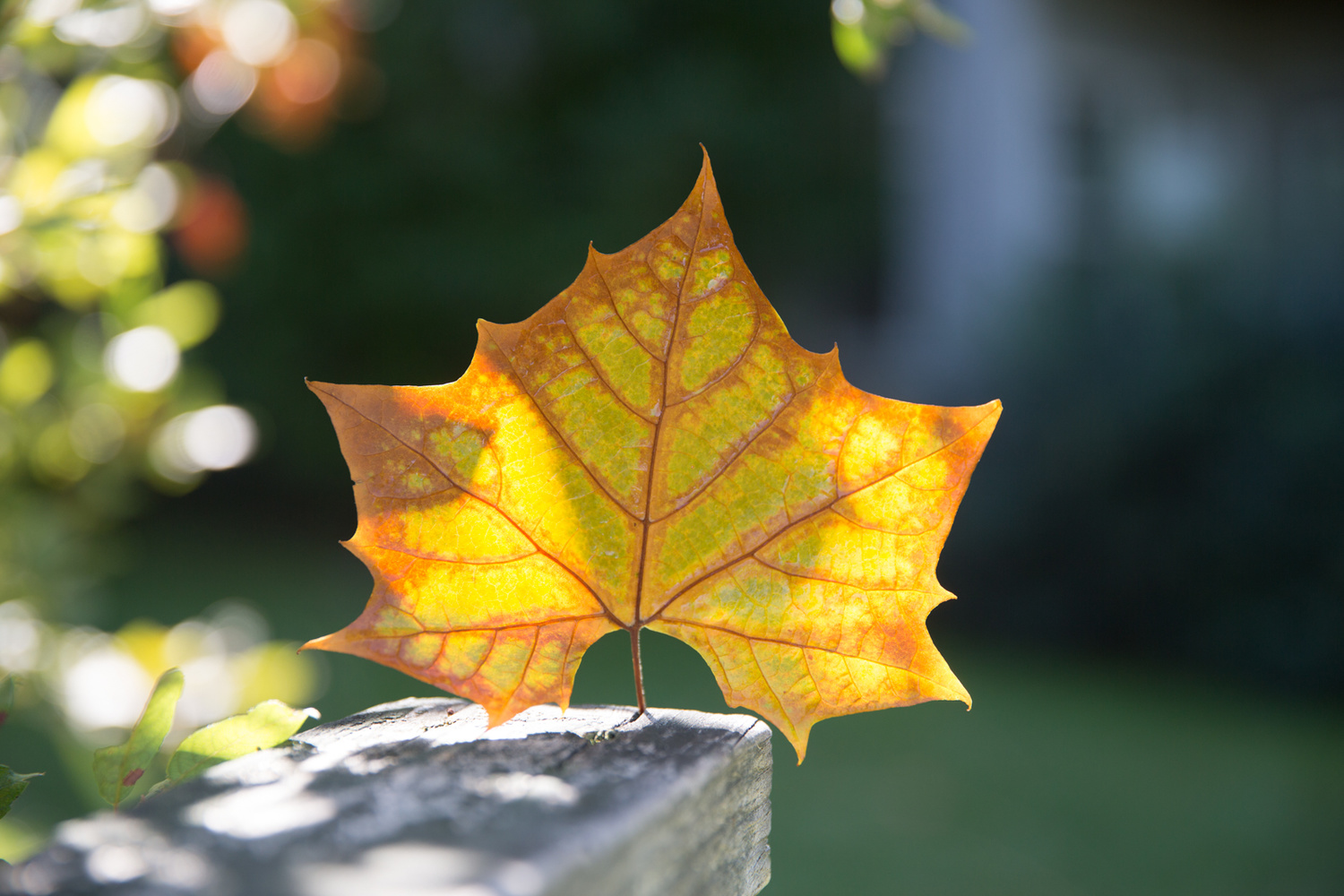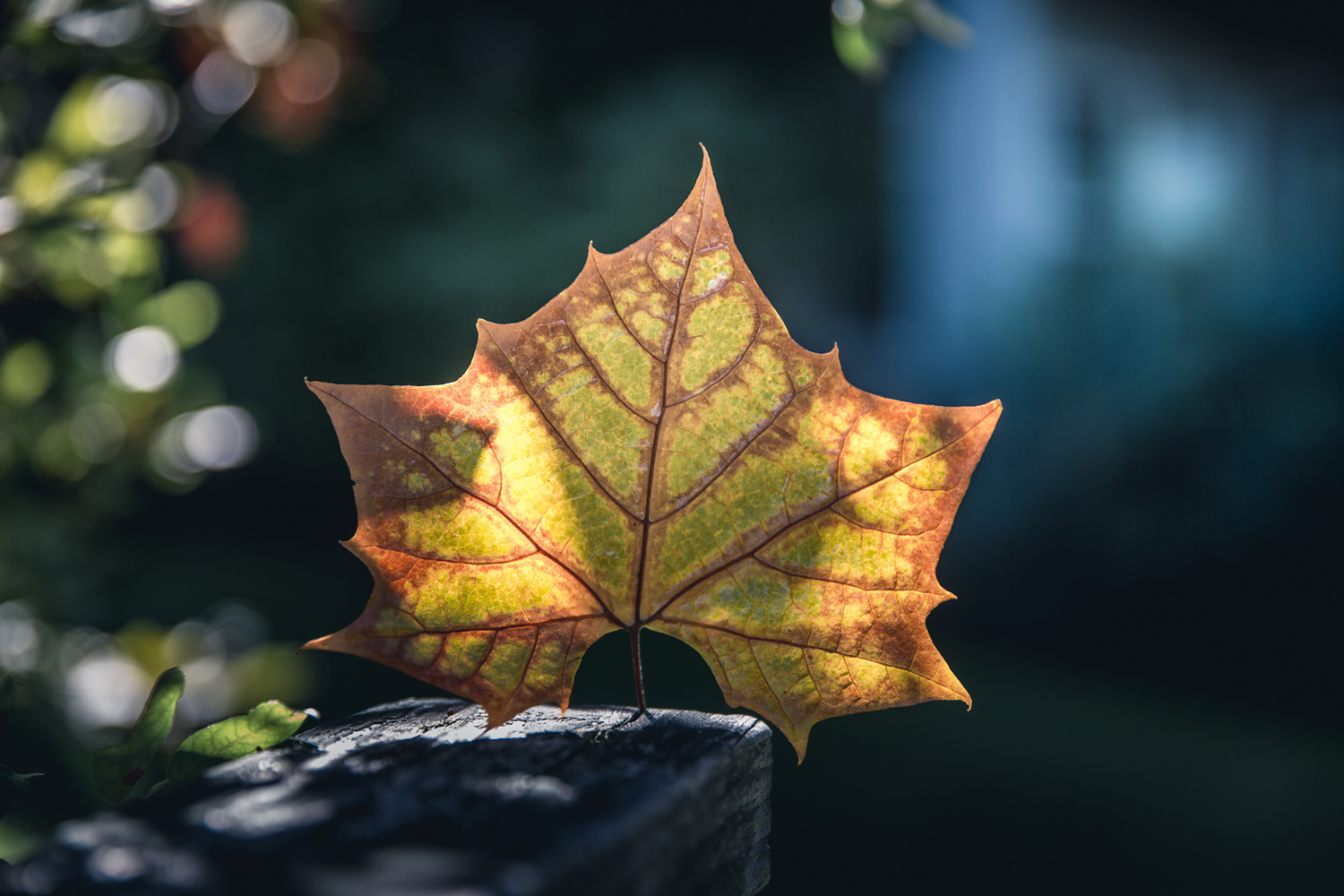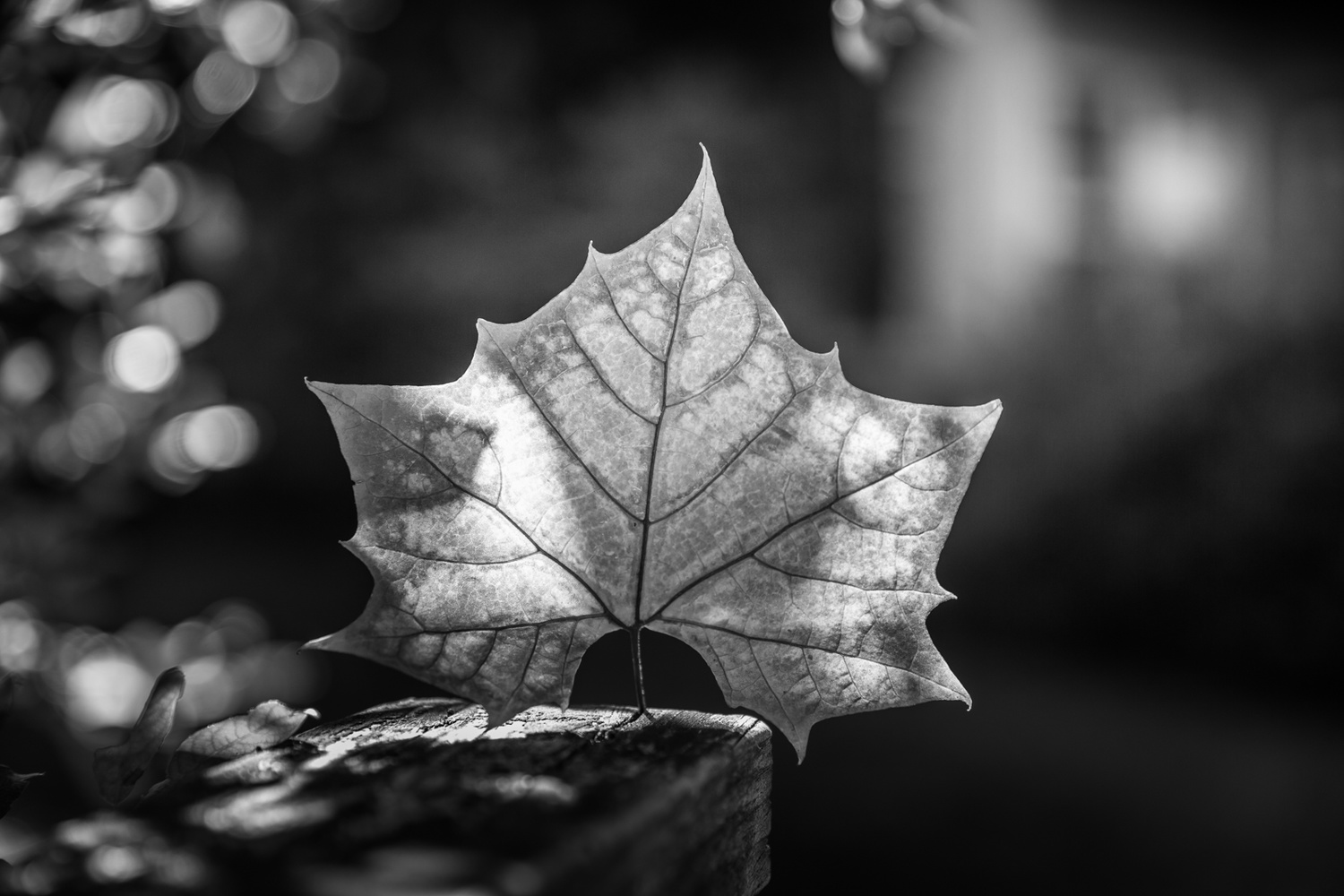By now, most of you have figured out that light is everything in photography. When the time of day isn't a variable you have control of, you may have to visualize how the available light will work with your subject.
Recently, the family and I took a vacation to Vermont. Our accommodations were on the ground floor, so I was able to walk right out the porch door to what was basically the bottom of a ski hill. The second morning, on my way out, I noticed this beautiful fallen leaf right by the steps. It seemed like it was out of place with all the lush green around us. I didn't immediately think to photograph it until I started exploring the area and found a little wooden footbridge over a ditch. There were some trees and bushes surrounding the bridge and there were several spots of dreamy sunlight because of it.
Since there wasn't much to capture besides the hand railing, I went and grabbed the leaf from earlier. The trick here was to make sure I positioned myself and the leaf so I was really capturing the light through it. I was using our Canon EF 70-200mm f/2.8L IS II USM lens. It is by far my favorite lens, even though its weight creates a bit of a love and hate relationship by the end of a long wedding.
To get the leaf to stand up, I simply wedged the stem into a crack in the wood. If there was any wind, this may not have been possible or at least not as easy. The captures straight out of the camera were nothing special, but I knew the light would have a lot of potential in post-production.
The biggest thing I was excited about was the varied glow coming from behind the leaf and the always desirable bokeh balls off to the left. You get the best bokeh and separation from the background when you shoot as close to the minimum focal distance as you can. A macro lens might have been easier to pull this shot off, but we don't have one at our disposal yet.
By lowering the overall brightness of the image, the true highlights become the main focus of the shot more than just the leaf itself. I have found that most of the photos I really like have some sort of interesting light. This is often done with strobes and reflectors or achieved through careful sculpting while editing.
In my opinion, the most important aspect of any photo is a strong sense of the subject. Try minimizing distractions like objects, highlights, or colors that may detract from the main theme of the shot. You will find your images become stronger and have more allure.












The headline had nothing to do with the article, cmon Michael...
So my idea was that understanding what you can do with light in a photo will expand your possibilities. I would have stopped taking this shot or passed over it before I learned this.
I see your point though. Thanks for reading and the feedback.
the most important in photography: "In my opinion, the most important aspect of any photo is a strong sense of the subject. Try minimizing distractions like objects, highlights, or colors that may detract from the main theme of the shot. You will find your images become stronger and have more allure." very nice.